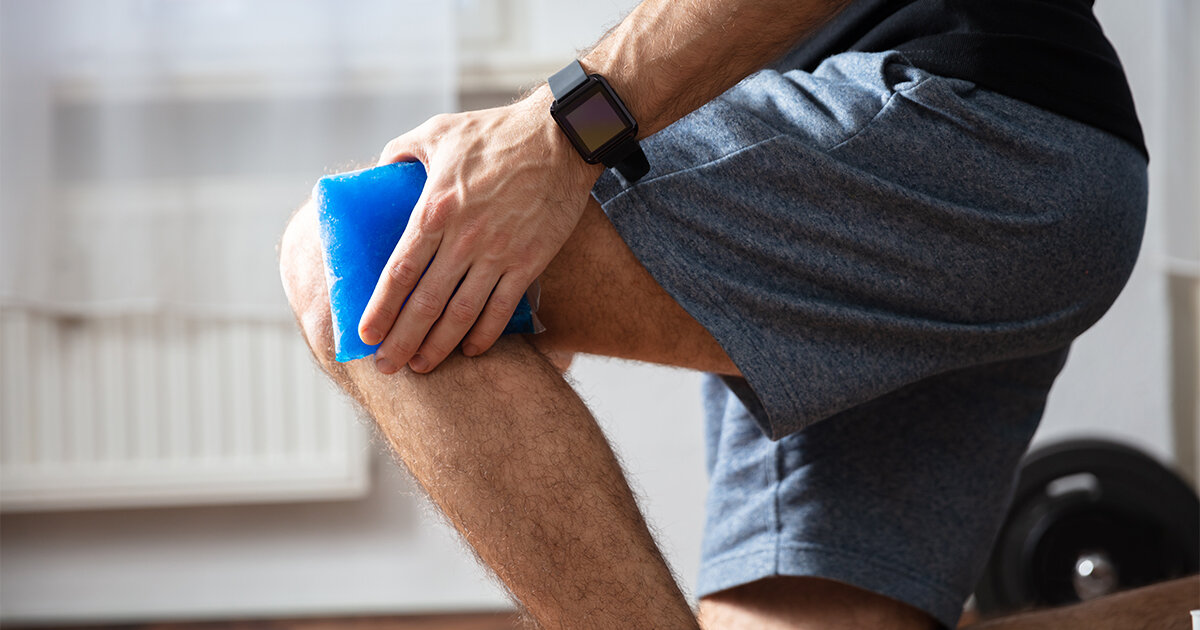P.E.A.C.E & L.O.V.E = An Updated Guide for Soft Tissue Injuries!
move over I.C.E., this is the best way to take care of an injury
If you’ve ever hurt yourself or sustained an injury, you’ve probably read somewhere on Google or heard a coach or doctor tell you to implement the method “R.I.C.E” (Rest, Ice, Compress, Elevate) in order to combat these soft tissue injuries and facilitate our bodies’ healing response. While this was meant for the acute phase of the injury (meaning JUST the first 24-72hrs), unfortunately we still see tons of people being misguided and utilizing this method weeks or even months into dealing with an injury!
In the British Journal of Sports Medicine (BJSM) in 2019, Dubois and Esculier proposed an updated acronym of “P.E.A.C.E and L.O.V.E” to assist in the management of musculoskeletal injuries through both the acute as well as subacute phases.
P.E.A.C.E. (acute phase) – AKA: Calm Shit Down
- P = Protect
- Initially after the injury, we want to protect the aggravated area by temporarily avoiding and unloading movements or exercises that provoke or increase discomfort. Usually movements that cause any kind of sharp pain should be avoided or modified in the first few days after the injury. While protecting the site of the injury, it is important to MINIMIZE REST and continue to find different ways to move in order to prevent overall deconditioning!
- E = Elevate
- Elevate the injured area higher than the heart.
- A = Avoid Anti-Inflammatory Modalities
- Avoid NSAIDs and Ice!
- Inflammation is our bodies natural way to combat the injury and help facilitate optimal soft tissue regeneration. Utilizing medication or ice to inhibit the inflammatory process can actually impair and slow down the healing process. The use of ice is mostly an analgesic one as it can assist with temporarily numbing the sensation of pain. However it is important to note that ice may potentially disrupt and delay the healing process of our body.
- Our bodies are extremely strong and resilient! Let your bodies do what it’s designed to do without impairing the natural process!
- C = Compress
- Utilizing elastic bandages or tape can assist with reduction of swelling (if there is swelling)
- E = Education
- Understand that passive therapy approaches (manual therapy, e-stim, ASTYM, Graston, dry needling, cupping, etc) has a minimal effect on pain/function when compared to an active approach
- Understand and set realistic expectations based on healing time frames depending on the severity of the injury
L.O.V.E. (sub-acute) – Build Shit Back Up
- L= Load
- Use an active approach and load the tissue with the issue! Let pain be your guide to allow for appropriate tolerable loading. Early loading has been shown to be extremely beneficial to help you get back to your normal activity and life pain free again!
- O = Optimism
- Perception and how we view situations are extremely important as our brain plays a significant part in the rehab process! Research has shown that individuals with negative expectations are more likely to have worse outcomes than individuals with positive expectations. Set yourself up for success by viewing situations through a positive lens and outlook!
- V = Vascularization
- Movement is medicine! Blood flow is extremely beneficial for accelerating the healing process. Pick pain-free movements that you enjoy and perform them often!
- E = Exercise
- Utilize an active approach in order to restore mobility, strength, stability, and proprioception to the area. This will not only help accelerate the healing process, but also help reduce the risk of a recurring injury!

0

0





Comments :
Michael Morrison
2 years agoJust to add to this that I also send to many of my patients: Even the guy who invented RICE says it is no longer the best way to go about treating a strain/ sprain: https://www.washingtonpost.com/national/health-science/the-method-you-learned-for-treating-an-ankle-or-knee-sprain-is-probably-wrong/2016/05/27/f32e86ca-8c9b-11e5-ae1f-af46b7df8483_story.html